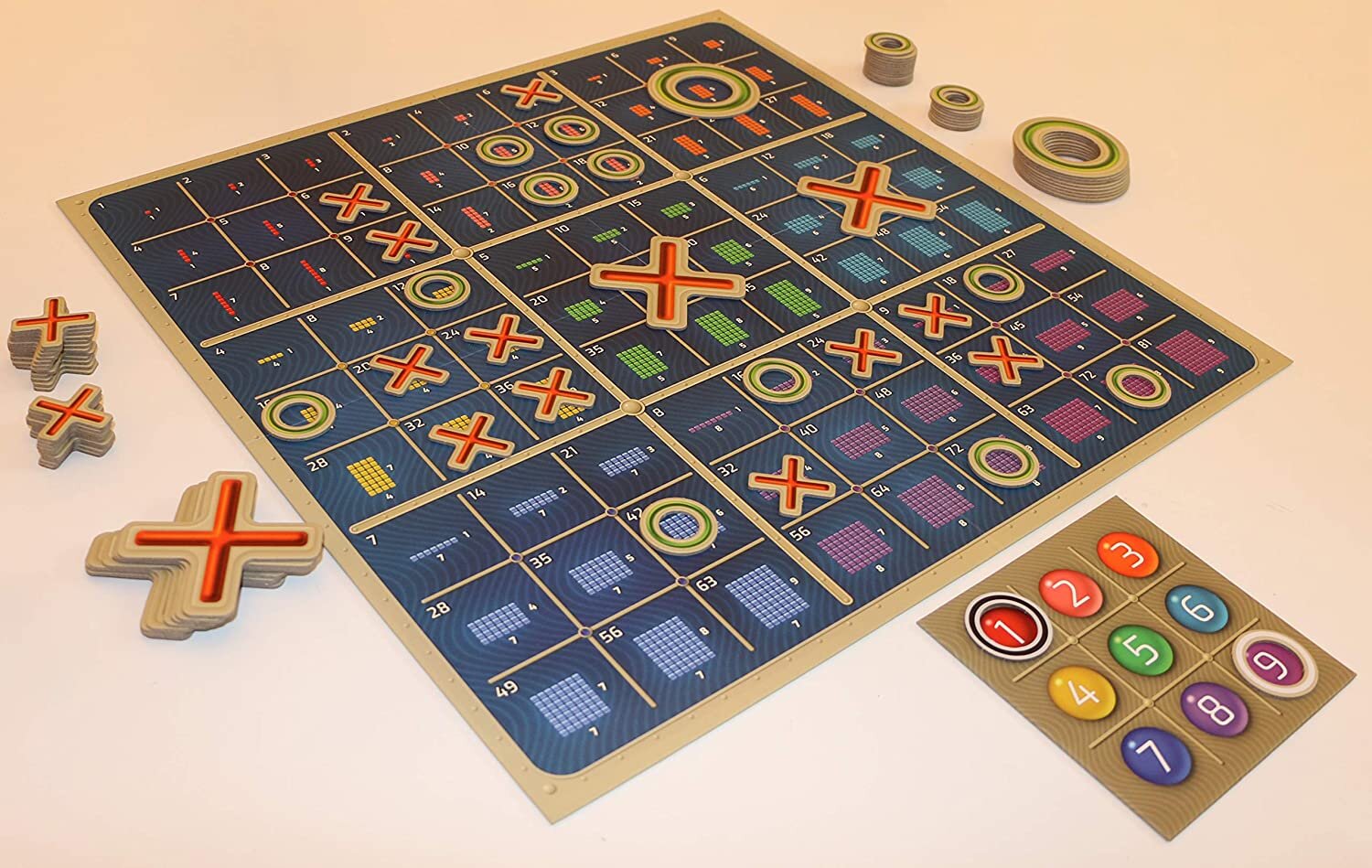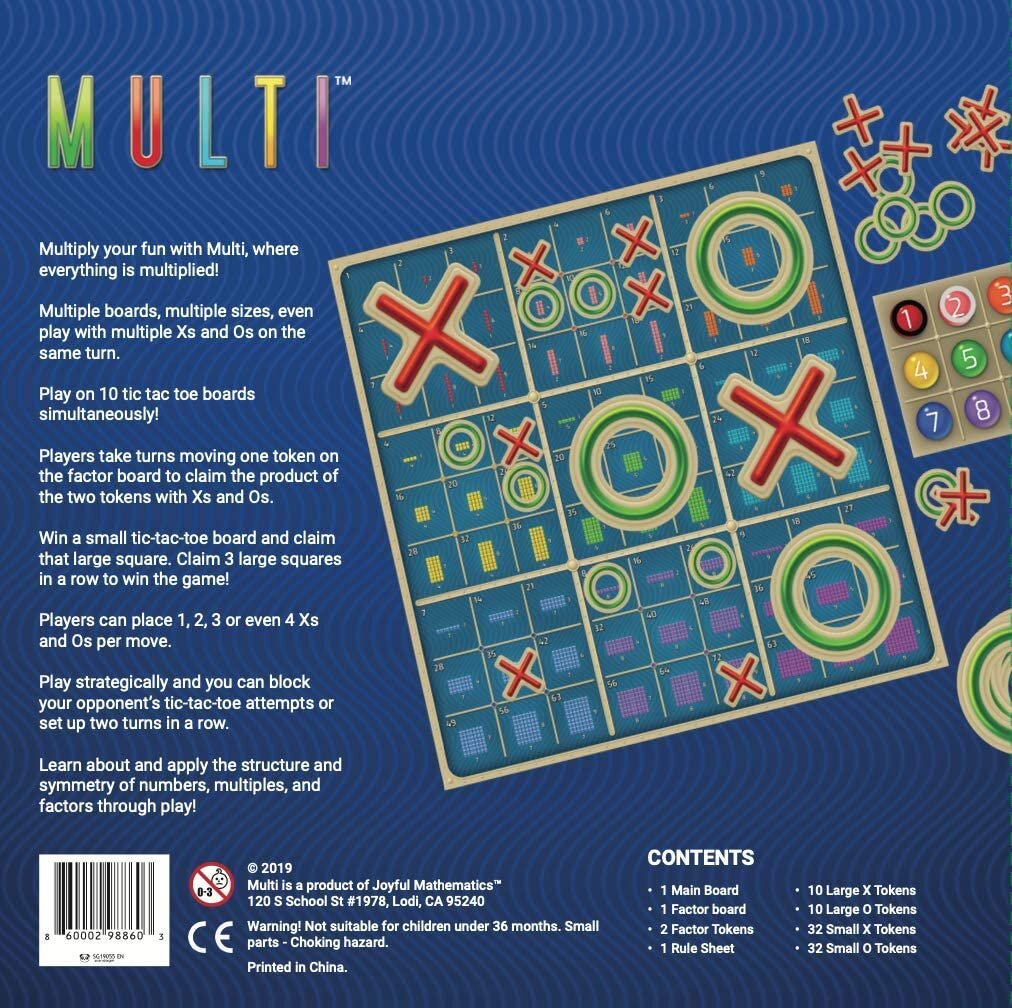MULTI - Now Available!
About a year ago, I shared a Kickstarter campaign on this newsletter. The game, developed by Federico Chialvo, was a fantastic melding of tic-tac-toe and multiplication that turned out to be far deeper and more interesting than I had expected. Fortunately, the Kickstarter was funded, so Federico got to work putting the game into production.
And now, the moment I've been waiting for is finally here! And I'm so thrilled that y'all finally get to play a game that I think is an absolute must-have for any upper-elementary kid or classroom.
The game is called MULTI.
How to Play
MULTI is played on a giant tic-tac-toe board, made up of nine smaller tic-tac-toe games. If you've ever played Ultimate Tic-Tac-Toe, you'll know the basic setup. The goal of the game is to win three mini-games in a row, at which point you win MULTI.
Each mini-game of tic-tac-toe is actually a multiplication table, and players use multiplication facts to capture individual cells.
The players make moves using the Factor Board, where the nine numbers from 1-9 are displayed.
So if player A goes first and claims the 4 on the Factor board, they get to capture every cell that contains a product of 4. Then, when player B goes, they might place their token on 8 on the factor board. In that case, they'd get to capture all the 32s on the tic-tac-toe board.
From that point, both players take turns moving a single factor token. Player A could move the token on 4, or the token on 8, but not both. As a result, their options are somewhat restricted based on the previous move. This gameplay mechanic, familiar to fans of The Product Game, is extremely powerful, as I'll explain below.
Once you win a mini-game, you get to replace your little Xs and Os with a giant version, which I can assure you is an extremely satisfying feeling.
Win three mini-games in a row, and you win MULTI!
Where's the Math?
MULTI is obviously a multiplication game, but it's so much richer than most games in the genre, because kids spend time thinking about the connections between math facts.
Let's say it's your turn and your opponent just claimed 28 with the factors 4 and 7. Now you have two options: you can move the 4 token, in which case the other token will remain on 7. Or you can do the opposite, moving the 7 token while the other remains on 4.
This means that, no matter what, you'll either be playing in the 4s mini-game or the 7s mini-game.
Of course, there are some ways to make capture spaces unexpectedly. You can capture the 24 spot even without a 4 or a 6, simply because you can use 8 and 3 instead. There are a few products like that, which appear in more than two locations on the board. When will your kiddos notice them?
Honestly, the first time I played this game, I expected it to be a quick, fun diversion. I had no idea that the strategy could be so deep. I was blown away by how much fun I had thinking through the implicaitons of each move!
And believe it or not, Federico filmed a gameplay video with fan favorite Dan Finkel, where Dan goes through the exact same process! If you want to get a feel for the game and listen to Dan unpack some of the math in the game, check it out!
Questions to Ask
When playing with your kids, I think you should draw their attention to the restrictions of the game. Before they move, ask them "Can you show me a spot that you could capture? What about a spot that is impossible to capture on this turn?"
These questions will help your child develop an approach to unpacking the logic of MULTI.
To go a step deeper, you can wait until they choose a move, then ask "If you move there, what good spaces can I capture?" Your child will use the same thought process, but this time they'll be looking for dangerous moves that their opponent can make!
You can actually play out a couple moves ahead, much like chess, and the more your kids play the more comfortable they'll become with making those mental leaps.
And the whole time, they're practicing their multiplication facts. Of course, it doesn't feel like practice. It feels like a game!
Click here to buy MULTI or MULTI - Print and Play Edition





